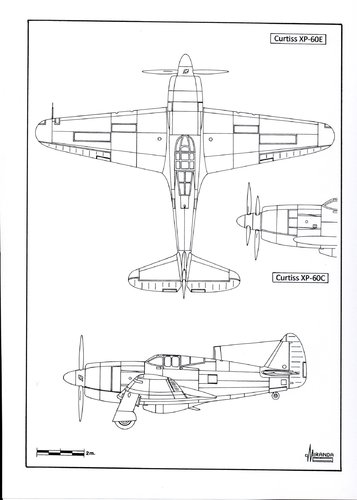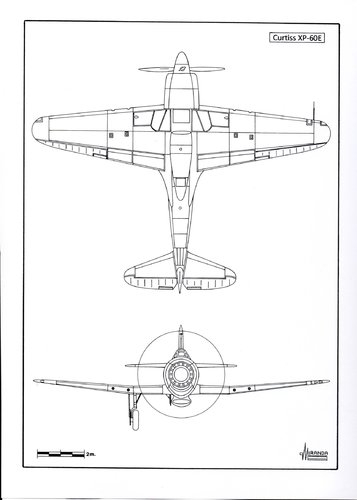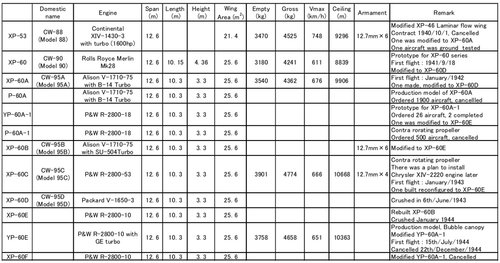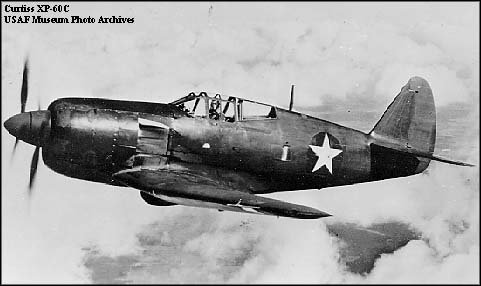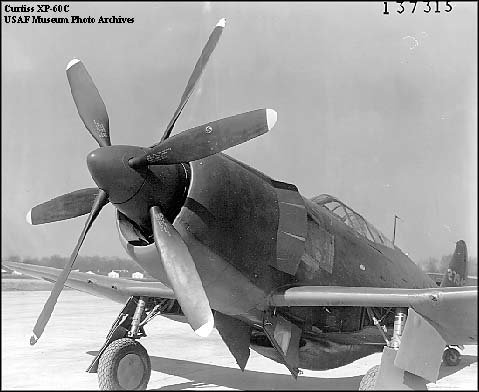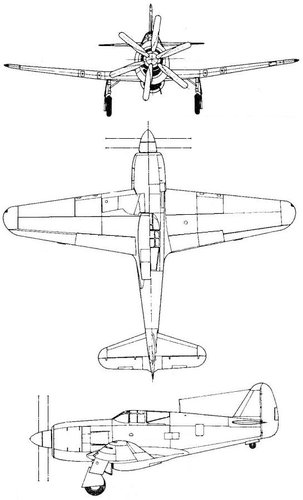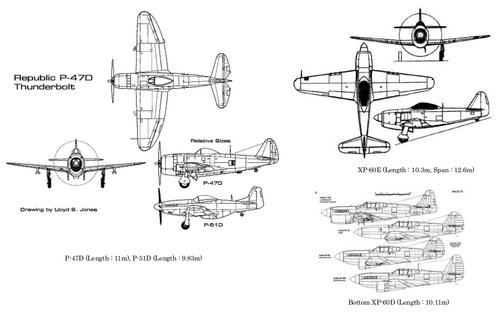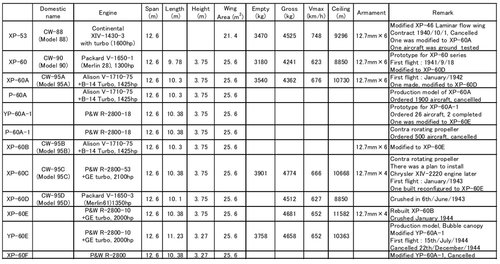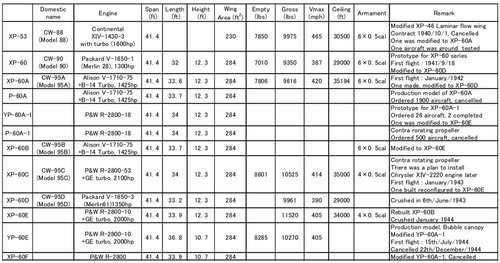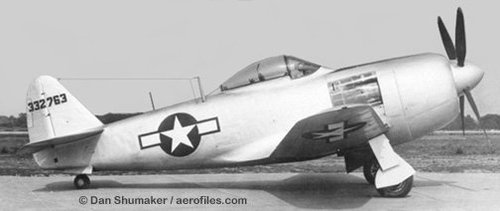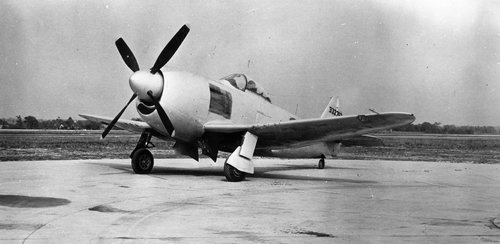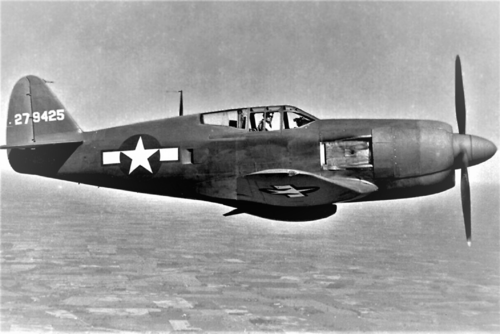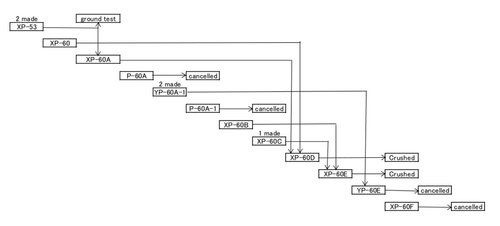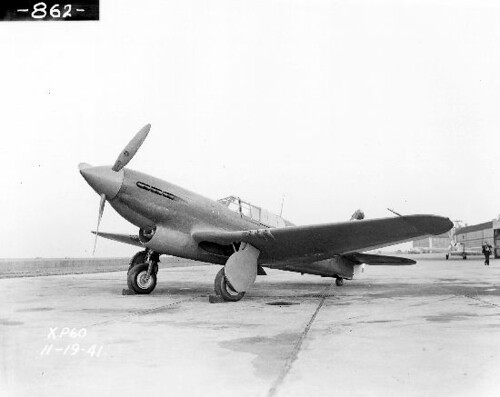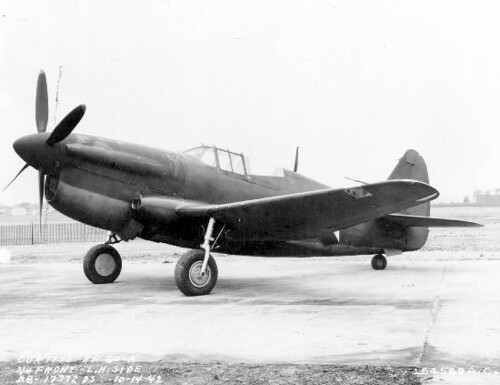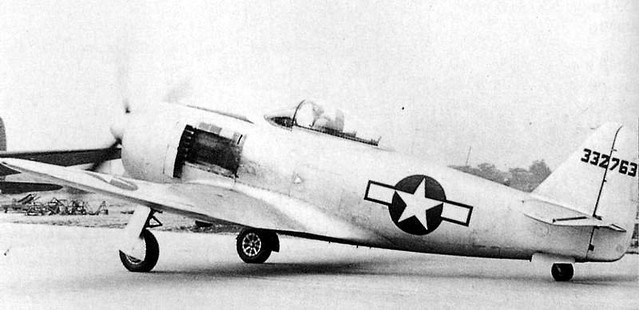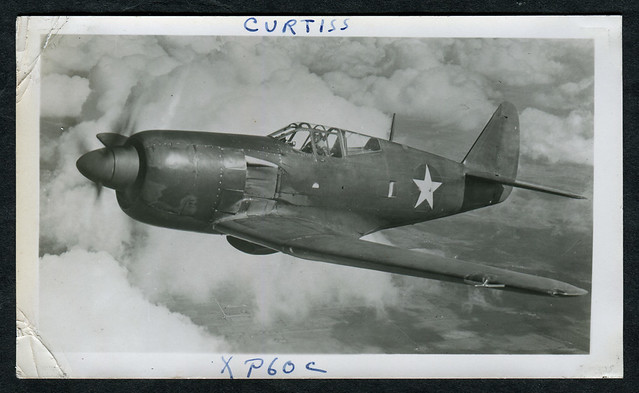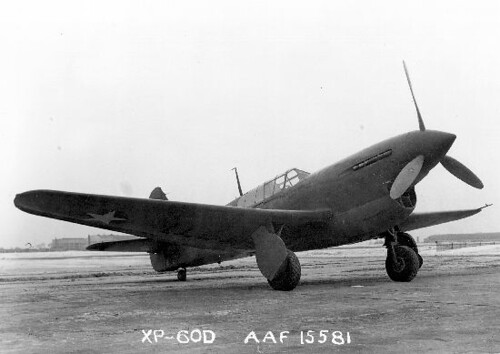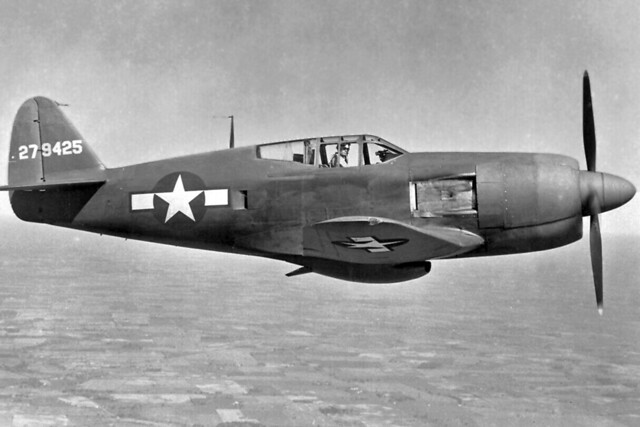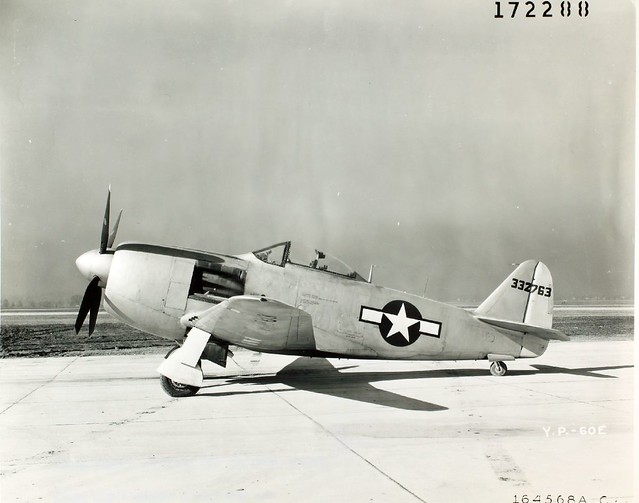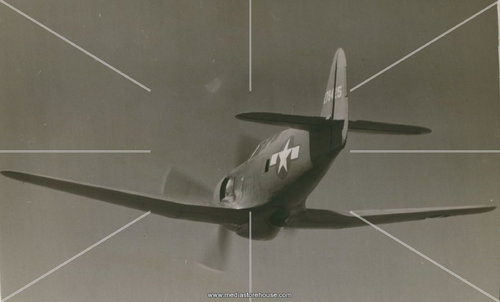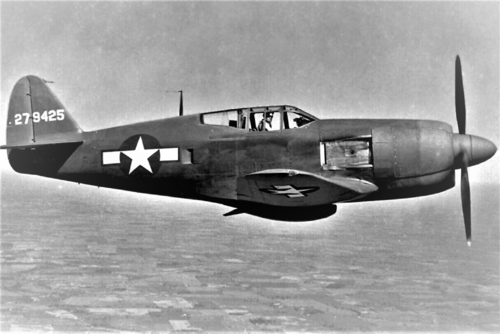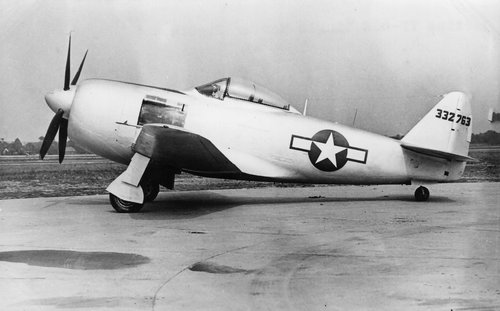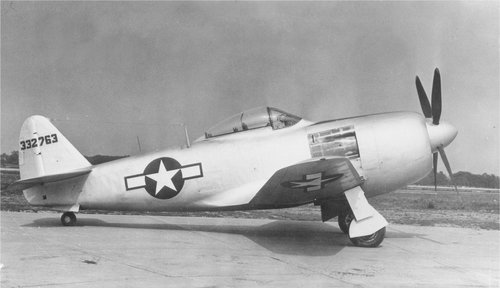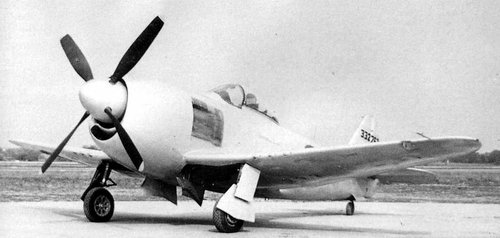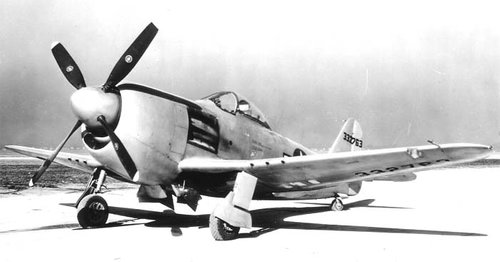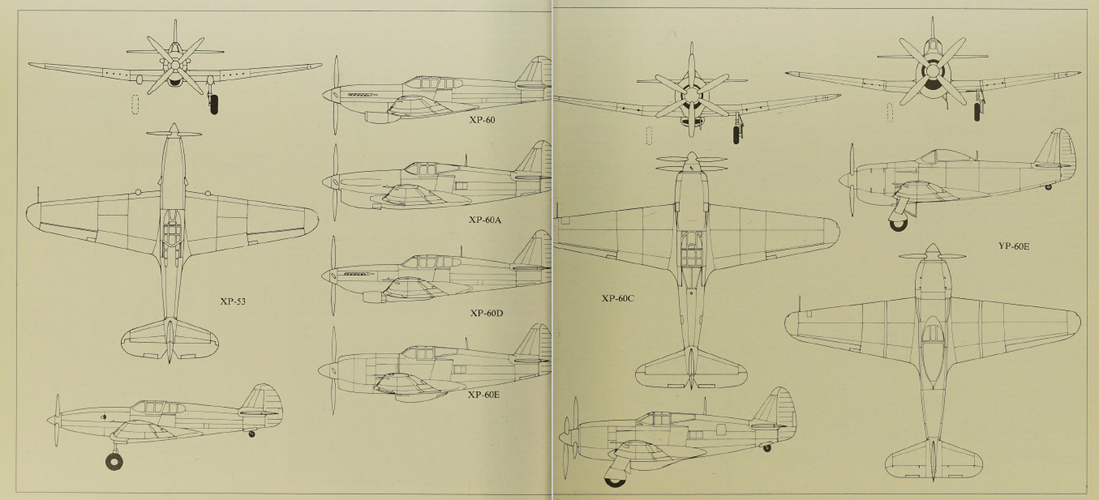Curtiss XP-60C (Model 95C) technical data
Power plant: one 2,100 hp Pratt & Whitney R-2800-53, 18 cylinder,air-cooled radial engine, with General Electric turbo-supercharger, driving a six-bladed contra-rotating propeller with 12.1 ft of diameter, wingspan: 41.4 ft (12.62 m), length: 34 ft (10.38 m), height: 12.3 ft (3.75 m), wing area: 284 sq.ft (25.54 sq.m), maximum speed: 414 mph (666 kph), maximum weight: 11,835 lbs (5,368 kg), climb rate: 3,890 ft/min (1,186 m/min), service ceiling: 37,900 ft (11,552 m), armament: four 0.50 cal M2 wing mounted machine guns.
Curtiss XP-60E (Model 95D) technical data
Power plant: one 2,000 hp Pratt & Whitney R-2800-10, 18 cylinder, air-cooled radial engine, with General Electric turbo-supercharger, driving a four-bladed propeller, wingspan: 41.4 ft (12.62 m), length: 33.9 ft (10.33 m), height: 12.3 ft (3.75 m), wing area: 284 sq.ft (25.54 sq.m), maximum speed: 405 mph (652 kph), maximum weight: 10,320 lbs (4,681 kg), climb rate: 4,000 ft/min (1,220 m/min), service ceiling: 38,000 ft (11,582 m), armament: four 0.50 cal M2 wing mounted machine guns with 250 rounds per gun.
Power plant: one 2,100 hp Pratt & Whitney R-2800-53, 18 cylinder,air-cooled radial engine, with General Electric turbo-supercharger, driving a six-bladed contra-rotating propeller with 12.1 ft of diameter, wingspan: 41.4 ft (12.62 m), length: 34 ft (10.38 m), height: 12.3 ft (3.75 m), wing area: 284 sq.ft (25.54 sq.m), maximum speed: 414 mph (666 kph), maximum weight: 11,835 lbs (5,368 kg), climb rate: 3,890 ft/min (1,186 m/min), service ceiling: 37,900 ft (11,552 m), armament: four 0.50 cal M2 wing mounted machine guns.
Curtiss XP-60E (Model 95D) technical data
Power plant: one 2,000 hp Pratt & Whitney R-2800-10, 18 cylinder, air-cooled radial engine, with General Electric turbo-supercharger, driving a four-bladed propeller, wingspan: 41.4 ft (12.62 m), length: 33.9 ft (10.33 m), height: 12.3 ft (3.75 m), wing area: 284 sq.ft (25.54 sq.m), maximum speed: 405 mph (652 kph), maximum weight: 10,320 lbs (4,681 kg), climb rate: 4,000 ft/min (1,220 m/min), service ceiling: 38,000 ft (11,582 m), armament: four 0.50 cal M2 wing mounted machine guns with 250 rounds per gun.

